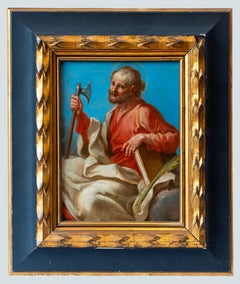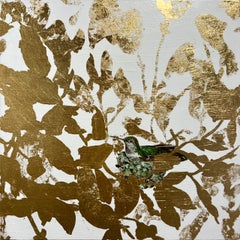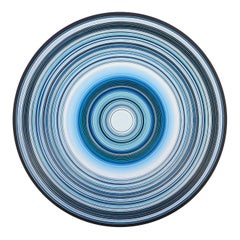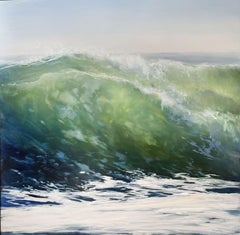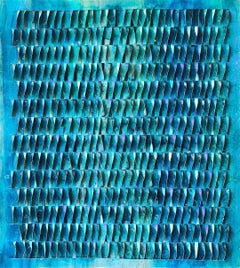Metal Paintings
Early 19th Century Old Masters Metal Paintings
Copper
2010s Contemporary Metal Paintings
Gold Leaf
2010s Contemporary Metal Paintings
Enamel
2010s Contemporary Metal Paintings
Metal
1720s Old Masters Metal Paintings
Gold Leaf
2010s Contemporary Metal Paintings
Gold Leaf
2010s Contemporary Metal Paintings
Enamel
21st Century and Contemporary Metal Paintings
Gold Leaf
2010s Contemporary Metal Paintings
Gold, Silver, Foil, Gold Leaf
2010s Contemporary Metal Paintings
Enamel
Early 1900s Impressionist Metal Paintings
Gold Leaf
Early 18th Century Baroque Metal Paintings
Copper
2010s Contemporary Metal Paintings
Gold Leaf
2010s Abstract Expressionist Metal Paintings
Gold Leaf
2010s Metal Paintings
Gold Leaf
2010s Metal Paintings
Gold Leaf
2010s Contemporary Metal Paintings
Gold
2010s Metal Paintings
Copper
Early 2000s Surrealist Metal Paintings
Gold Leaf
2010s Abstract Metal Paintings
Gold Leaf
2010s Abstract Metal Paintings
Enamel
1990s Symbolist Metal Paintings
Copper, Enamel
1970s Contemporary Metal Paintings
Metal
2010s Contemporary Metal Paintings
Metal
21st Century and Contemporary Metal Paintings
Gold Leaf
21st Century and Contemporary Street Art Metal Paintings
Enamel
2010s Contemporary Metal Paintings
Enamel
21st Century and Contemporary Renaissance Metal Paintings
Gold Leaf
1610s Old Masters Metal Paintings
Copper
2010s Realist Metal Paintings
Gold Leaf
2010s Contemporary Metal Paintings
Metal
2010s Abstract Metal Paintings
Enamel
2010s Impressionist Metal Paintings
Gold Leaf
2010s Contemporary Metal Paintings
Gold Leaf
21st Century and Contemporary Abstract Expressionist Metal Paintings
Copper
1880s Baroque Metal Paintings
Enamel
Early 2000s Abstract Metal Paintings
Gold Leaf
1870s Art Nouveau Metal Paintings
Enamel
17th Century Old Masters Metal Paintings
Copper
2010s Contemporary Metal Paintings
Gold Leaf
Early 1900s Post-Impressionist Metal Paintings
Metal
1990s Abstract Expressionist Metal Paintings
Copper
2010s Neo-Expressionist Metal Paintings
Gold Leaf
21st Century and Contemporary Metal Paintings
Gold Leaf
1920s Impressionist Metal Paintings
Gold Leaf
2010s Contemporary Metal Paintings
Gold Leaf
2010s Abstract Expressionist Metal Paintings
Enamel
2010s Contemporary Metal Paintings
Gold Leaf
2010s Abstract Impressionist Metal Paintings
Copper, Gold Leaf
1990s Metal Paintings
Wire
Late 20th Century Abstract Metal Paintings
Gold Leaf
21st Century and Contemporary Conceptual Metal Paintings
Enamel
2010s Contemporary Metal Paintings
Gold Leaf
2010s Abstract Expressionist Metal Paintings
Enamel
2010s Contemporary Metal Paintings
Copper, Gold Leaf
2010s Contemporary Metal Paintings
Gold Leaf
2010s Contemporary Metal Paintings
Metal, Steel, Iron
2010s Photorealist Metal Paintings
Metal
2010s Abstract Expressionist Metal Paintings
Gold Leaf
2010s Contemporary Metal Paintings
Enamel
Metal paintings for sale on 1stDibs.
Read More
Impressionist Rebel Camille Pissarro Made the Everyday Feel Radical
In Denver, a major new retrospective reveals how the painter’s devotion to ordinary life — and his fearless shifts in style — shaped modern art.
The Real World Portraitist of “The Gilded Age,” Season Three
Only the best painter could suit the calculatedly extravagant Bertha Russell.
See Kent Monkman’s Magical Realist Take on Frontier History
With a solo show at the Denver Art Museum and a commission from the Met, the Cree Canadian painter has become an international sensation.
Yale’s Trove of British Art Is Back on View in a Refreshed Louis Kahn Building
After a two-year closure, they Yale Center for British Art opens its doors again, with all sorts of changes to its building and programming.
At 89, Artist Lucio Pozzi Is Reaching New Career Heights
The Italian-American’s 2020 abstract painting “The Hoe” personifies his “art of not knowing.”
The 1stDibs Guide to Types of Abstract Art
Get to know the key movements and artists who have influenced visual culture for more than a century.
With a Show at MoMA, Marlon Mullen Paints Pictures That Are beyond Words
The nonspeaking California artist is having a moment, with vivacious paintings that play on art-magazine covers as well as more mysterious abstractions.
The Vibrant Beauty of Orphist Art Supersedes Its Perplexing Name
This kaleidoscopic early-modern art style has long deserved another look. Now, the Guggenheim museum is doing just that.
